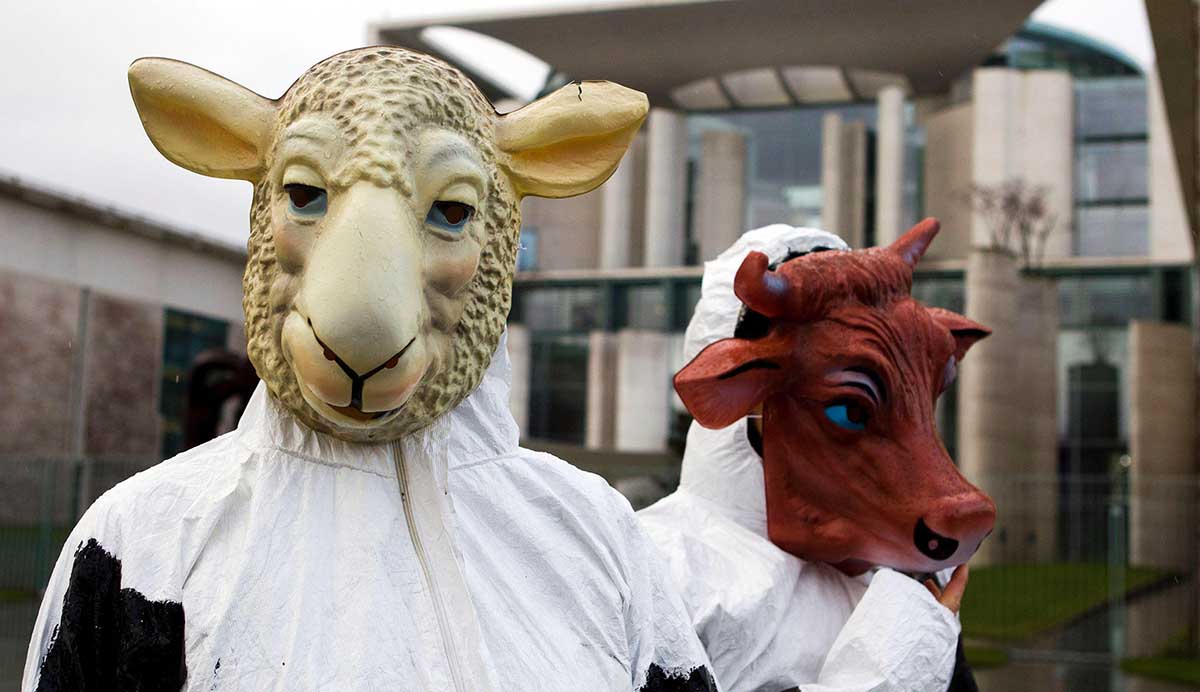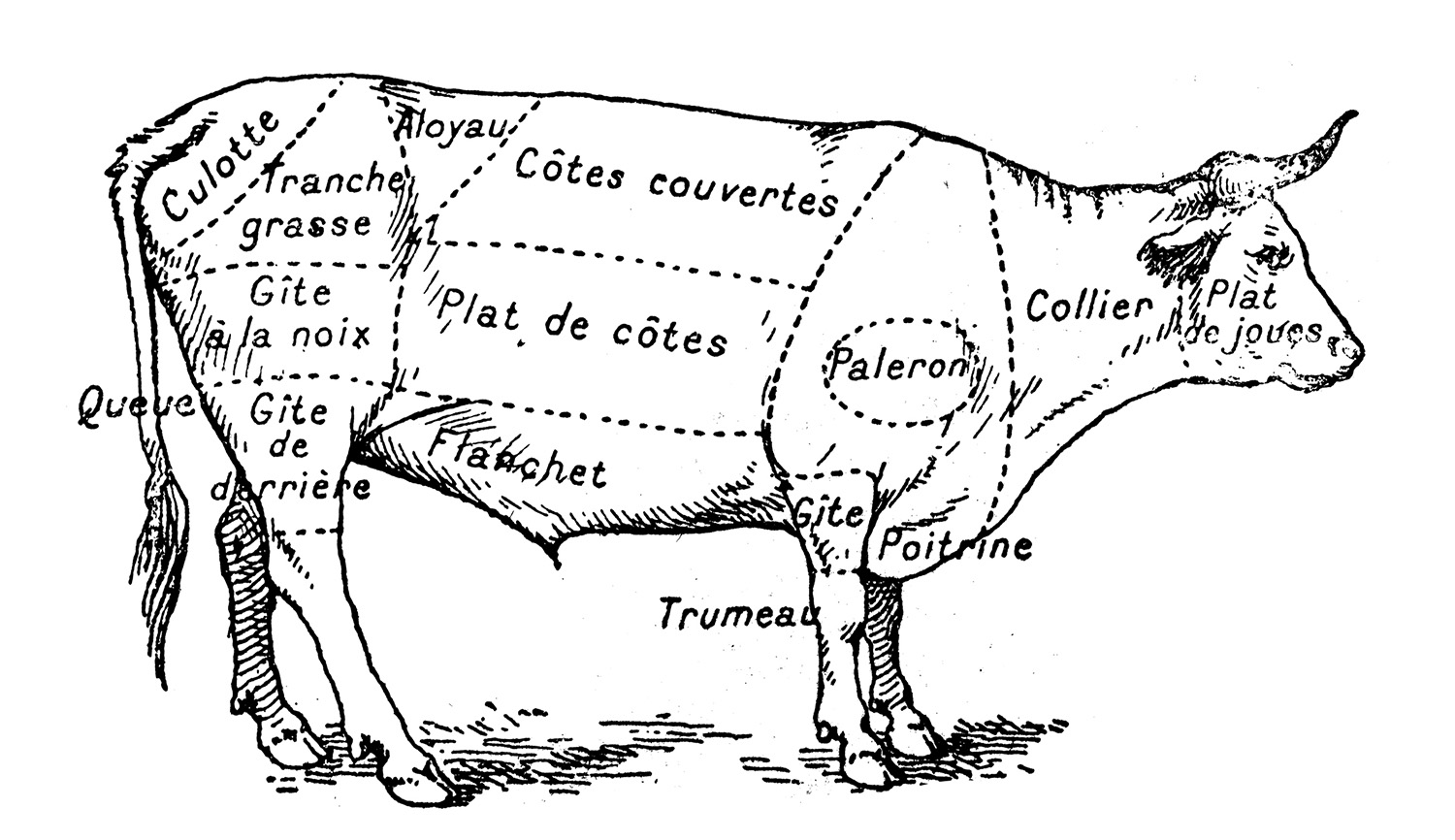Eric Mechoulan’s essay on Europe’s intolerance for Jewish ritual slaughter combines thorough research and documentation—no pertinent angle has been forgotten—with lucid exposition and a deep understanding of the cultural, social, and political implications. Such an examination has been sorely missing until now; Jewish leaders, not just in Europe but elsewhere as well, including Israel and America, should read it and meditate on it without delay. Non-Jewish leaders, opinion-makers, and government officials would also benefit from it.
The main lesson to be drawn from Mechoulan’s report is that the European debate on kashrut has very little to do with hygiene, animal welfare, or the global economics and ecology of food—as is usually assumed—and a lot to do with anti-Semitism. The author is right to describe graphically and to the last detail the various methods used in Europe allegedly to “alleviate” animal suffering. When people talk about “stunning,” they usually have in mind something akin to anesthesia. I remember how shocked a panel of journalists and government advisors was in France, some twenty years ago, when they were exposed to the real thing for the first time in a video. Mechanical and electric “stunning” are not just more technically barbarous than shechita: they are redundantly barbarous, since they add a form of pre-slaughter or post-slaughter torture to slaughter itself. Likewise, it is indeed useful to mention, as Mechoulan does, the many breaches of animal welfare that are routinely accepted in Europe for economic or “cultural” reasons, from industrial fishing and the slaughter of cetaceans, as practiced by the kosher-intolerant Norwegians, to hunting and bullfighting.
Some of the European countries that have outlawed shechita are just perpetuating or reinstating 19th- or early 20th-century bans that were enacted in order to keep Jews out or to turn them into second-class citizens. Evidently, another, much larger and much more demographically dynamic non-Christian religion, Islam, with slaughter requirements of its own, is now being targeted along with Judaism. However, the old bans were not removed in the interval between the public rejection of anti-Semitism after 1945 and the dramatic growth of Muslim communities at the end of the 20th century and the beginning of the 21st; in some cases, they were actually strengthened. Even more significantly, the various groups that campaign against ritual slaughter cannot entirely ignore the fact that Islam is less stringent and more amenable to compromise in these matters than Judaism—so much so that whereas a complete ban on “non-stunned” meat would be catastrophic for Jews, it would hardly affect the rise of Islam.
Switzerland started banning ritual slaughter in 1867, and turned the ban into a federal, nation-wide, law in 1893. Legalization was envisioned in 1978 but rejected in a popular referendum, no less, in 2003. There was an attempt at the same time to ban the import of kosher meat as well.
Sweden, which outlawed the ritual slaughter of cattle in 1937, doubled down on poultry 52 years later, in 1989. Norway issued its own ban in 1929 and never considered recalling it.
Pre-war Poland, where 10 percent of the population was Jewish, banned shechita in 1937—the most extreme attack on Jewish religious rights at the time outside Nazi Germany and the Communist USSR. In post-Communist Poland, kosher and halal slaughter were banned in 2012, technically following a decision of the Constitutional Court but in fact as the result of a campaign supported both by Jaroslaw Kaczynski, the leader of the conservative PiS party, and animal-rights activists. The ban was suspended a few years later at the urging of the meat industry and some other conservatives.
Nazi Germany banned shechita in 1933. Similar bans were enforced in the territories conquered by the Third Reich after 1938 and imitated by such allies as Italy and Hungary. While contemporary Germany places great emphasis on the protection of Jewish and minority religious rights, including kashrut, Austria, a country absorbed by the Reich from 1938 to 1945, considered banning shechita nationwide in 1998 and eventually allowed for local bans. Slovenia, which is historically close to Austria, and which was controlled by Nazi Germany from 1941 to 1945, banned all forms of ritual slaughter in 2012.
In countries where no such legal tradition or precedent existed, various forms of prohibition or restriction have been introduced over the past twenty years, either legally or administratively—as is the case in Iceland, the Netherlands, Belgium, Denmark, Latvia, Estonia, Slovakia, Greece, and Cyprus—and various campaigns against ritual slaughter have gained momentum elsewhere, notably in France. Here again anti-Semitism seems to be the key. But it might be important, at this point, to make clear what anti-Semitism really is in the post-modern era.
Mechoulan brilliantly outlines the theological differences between Judaism and Christianity regarding the very idea of “sacrifice”—epitomizing the competing views about sacrificial “blood” that may have nurtured an age-old Christian revulsion towards shechita along with a demonization of the shechita-happy Jews. Even in a secularized (or de-Christianized) Europe, despite the efforts of the churches to distance themselves from the anti-Jewish tropes of the past, this religious heritage may still, in his opinion, carry weight and influence the public conversation.
I largely agree with Mechoulan’s intuition and his insistence on a “metapolitical” approach granting as much importance to culture writ large as to politics or politicking. But I beg to differ on one point only, or rather to suggest a further dimension. My own feeling is that what has always been at stake in the Jewish-Christian debate is not classical Christian theology, which after all always recognized the Jews as a central tenet of God’s grand design and granted them a legitimate niche in Christian society. The problem is the unholy ghost in Christianity’s machine: Marcionism, the 1st-century contention that the God of Hebrew Scripture really is the Devil, and that Christ saved Man from him. While Marcionism was formally rejected as heretical by all churches, if only because it implied a dualist, gnostic, vision of two competing Gods, it never ceased to come back and haunt Christianity. And for good reason. Christians, at some point, always had to wonder why they drifted away from the Jewish fold. Marcionism provided them with a simple, irresistible, answer: the Jews, their books, and their ways, are absolutely evil. Ergo, the less Jewish, or the more anti-Jewish, you are, the holier you are.
It was perhaps inevitable that Marcionism should come back in full force in the 20th century, as classical Christianity was receding and no longer able to contain it. One instance of this retour du refoulé was Nazism, with its openly Marcionite philosophy and its attempt to substitute a de-Judaized “German Christian Church” for normative Catholicism and Protestantism. A second instance, interwoven with the first one in many ways, is the Green, ecological, and animal-rights-obsessed cult of Mother Earth, or “the Planet,” according to which a pristine world was sullied by a conspiracy of Old Testament-reading capitalists. Both movements have focused their holy hatred on shechita: not out of concern for animals, as we have seen, but rather because of the biblical meaning of this supremely “ritual” slaughter.
Another important lesson from Mechoulan is the frailty (or perhaps the betrayal), in front of all that, of some European governments and of their judiciaries. Ever since Franklin D. Roosevelt’s Four Freedoms Speech in 1941, religious freedom has been seen as one of the founding principles of Western and world democracy. As such, it has been incorporated into the United Nations’ Universal Declaration of Human Rights and the European Union’s Charter of Fundamental Rights, as well as in many national constitutional documents. Moreover, Western democratic nations, especially in Europe, have passed specific laws to protect Judaism as a long-persecuted minority religion.
This has not prevented several countries in Europe from maintaining a legal prohibition on shechita, a practice that Jews deem to be essential to their religious identity, nor several other ones to pass new laws to the same effect. Likewise, it has not discouraged national or supranational courts of justice, including the European Court of Human Rights, from granting legitimacy to anti-Jewish legislation.
Admittedly, one should not paint everything black and white. Most European governments have not indulged, so far, in anti-shechita legislation. Some constitutional courts—Finland’s for instance—have struck it down. Still, the extent to which principles have been ignored is disquieting.
Jews know out of accumulated experience that anti-Semitism never ends but rather transmogrifies from one pattern to another one. To quote the Passover Haggadah: “For not just one alone has risen against us to destroy us, but in every generation they rise against us to destroy us.” However, the problem is not so much whether new anti-Semites are arising (either of the milder or the harsher variety), or why they keep arising, but rather where they are currently arising from. Just like the French army in 1939 was ready for a 1914 style war, but not for the Blitzkrieg of 1940, Jews are usually well equipped to fight yesterday’s anti-Semitism but caught off guard by today’s. All the more so when it stems from quarters that were heretofore meant to be Jewish-friendly—like good, democratic, principled, European nations—or when the Marcionites dress in the clothing of compassionate idealists.
More about: Europe, History & Ideas, Kashrut, new-registrations, Ritual slaughter, The Jewish World







